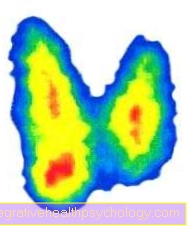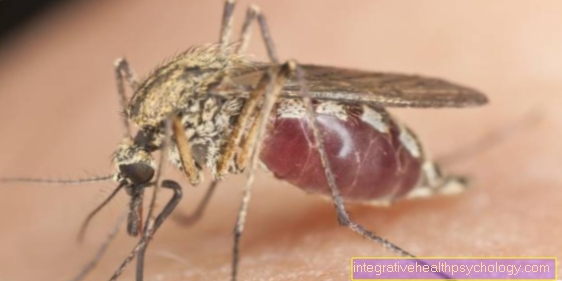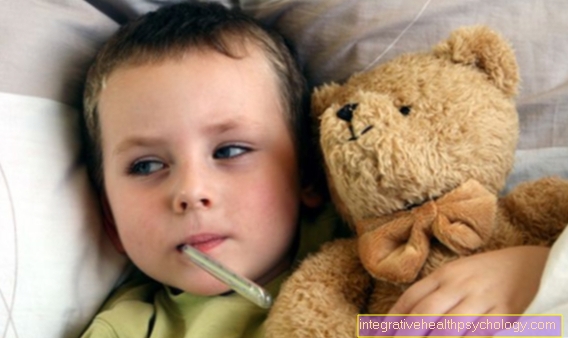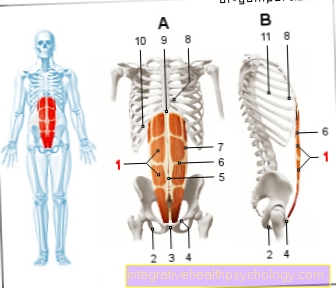Grey's Syndrome
definition
The Gray Syndrome (also: Gray syndrome) describes an acute illness in premature or newborn babies that can occur after administration of the antibiotic chloramphenicol. Chloramphenicol is broken down in the liver.
Since the liver of the newborn has not yet taken on its full function, the antibiotic cannot be broken down sufficiently so that it builds up in the child's organism.
Life-threatening symptoms occur.

causes
The trigger for the disease is the administration of the antibiotic chloramphenicol. It is used, for example, to treat severe infectious diseases such as typhoid, diphtheria, malaria and meningitis.
Due to numerous side effects, it is only used in Germany in local form (eye ointment). Again, however, caution should be exercised. The reason for Grey's syndrome is the not yet fully functional liver of the newborn.
In order to break down chloramphenicol, the liver must ensure that the drug becomes more water-soluble and can then be excreted via the kidneys. This process is called Glucoronidation designated.
However, this can only be carried out by the newborn's liver from around the third month of life. Therefore, the antibiotic cannot be broken down and builds up, causing poisoning (Intoxication). Chloramphenicol can pass into breast milk in breastfeeding mothers who take the drug. Breastfeeding mothers should therefore not take chloramphenicol.
Read more on the topic:
- Poisoning in children
- Typhoid vaccination
aspirin
Aspirin® does not play a role in Grey's syndrome. But probably with Reye's syndrome. This mainly affects children between the ages of 4 and 10 who suffer from a viral infection of the upper respiratory tract.
The trigger for Reye's syndrome is presumably the administration of Aspirin® when the child is simultaneously infected with varicella zoster viruses (trigger of chickenpox) or influenza viruses (flu viruses). Reye's syndrome begins with vomiting, fever, drowsiness, and, in younger children, vigorous crying. Seizures and coma can occur. The brain becomes inflamed over time (Encephalitis).
Reye's syndrome is often fatal. Only a rapid onset of symptomatic intensive care therapy can prevent death. Due to Reye's syndrome, Aspirin® should never be used in children with a febrile infection without first contacting the treating (pediatric) doctor. Paracetamol is therefore a better alternative to Aspirin® for lowering fever and relieving pain in children.
Read more on the topic: Reye syndrome
Symptoms
The leading symptom of Gray Syndrome is a graying of the skin. This is where the name of the disease comes from. In addition, there are a few other symptoms that also affect different organ systems.
These are mainly:
- Hypothermia
- low blood pressure
- Loss of appetite
- Breathing disorders
- Nausea and vomiting
- The fingers and toes and face are blue
- as well as circulatory failure.
therapy
The only therapy is the immediate discontinuation of the triggering antibiotic chloramphenicol. There is no specific antidote for the treatment of Grey's syndrome, so therapy is primarily geared towards symptom control and close monitoring and intensive medical care.
In this way, according to the possibilities of intensive care medicine, each of the above symptoms is treated as best as possible. In severe cases, it may also be necessary to use kidney replacement procedures (known as dialysis) to remove the drug from the child's bloodstream.
forecast
The disease is potentially life threatening.
Fortunately, it has become extremely rare these days, as the risks of chloramphenicol for adults and especially for newborns are known and the drug is rarely used.



























.jpg)

